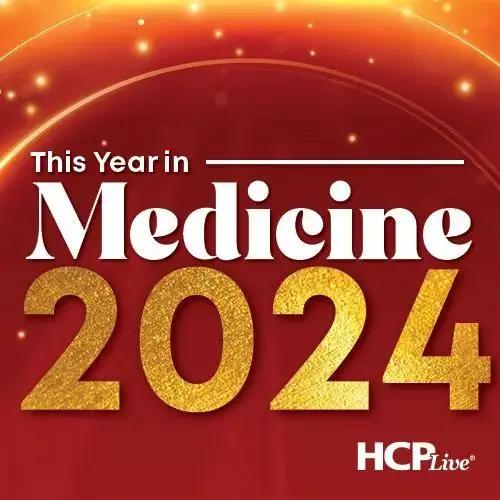MRSA is a strain of S aureus bacteria that has acquired resistance to methicillin and other antibiotics typically used to treat staph infections.
Image credits: Unsplash

Over the past decade, the surveillance network for Staphylococcus aureus in pediatric skin and soft tissue infections (SSTIs) in China has documented significant changes in antibiotic resistance and sensitivity. While sensitivity to some antibiotics has improved, resistance to clindamycin remains high, and geographical variations in resistance patterns emphasize the importance of localized surveillance and targeted antibiotic stewardship.
The detection rate of S aureus was 62.57%, with MRSA constituting 14.79%, an increase from 2.58% observed in the previous 2009-2011 study. Sensitivity to cephalosporins and fusidic acid has decreased, while sensitivity to chloramphenicol, ciprofloxacin, clindamycin, erythromycin, gentamicin, penicillin, and tetracycline has significantly improved. Sensitivity to mupirocin, trimethoprim/sulfamethoxazole (TRISUL), and rifampicin remains high at 97.90%, 99.35%, and 96.66%, respectively.1
“In this study, we identified a low resistance rate of S aureus to TRISUL (.4%–2%). Clindamycin was reported to be effective at treating infections caused by susceptible CA-MRSA isolates,” investigators explained. “However, in this study, though significantly decreased compared with that in 2009-2011, the resistance rate of clindamycin was still higher than 50%, indicating that it is not a good choice for treating SSTIs in children in China.”
3 Key Takeaways
- The prevalence of MRSA among pediatric SSTIs in China rose significantly from 2.58% in 2009-2011 to 14.79% in 2019-2021.
- There have been significant changes in antibiotic sensitivity, with reduced effectiveness of cephalosporins and fusidic acid, but improved sensitivity to several other antibiotics.
- Rising clindamycin resistance and regional variability in resistance patterns underscore the need for targeted antibiotic stewardship and localized treatment strategies.
From May 2019 to August 2021, patients with SSTIs were recruited from the dermatology departments of 22 tertiary pediatric hospitals across seven regions in China.1
The most common multidrug resistance patterns were erythromycin-clindamycin-tetracycline for MRSA (55.84%) and erythromycin-clindamycin-chloramphenicol for methicillin-sensitive S aureus (MSSA) (27.85%). Additionally, 12 strains resistant to high-level mupirocin were identified, and there were notable geographical and seasonal variations in resistance patterns. The predominant MRSA types were ST121 (46.08%) and ST59 (19.61%), with SCCmec V (65.69%) and SCCmec IV (31.86%) being the most common epidemic types. The most prevalent MRSA clones nationwide were ST121-V, ST59-IV, and ST22-V. The detection rate of the Panton-Valentine leucocidin (PVL) gene increased markedly from 9.09% in 2009-2011 to 22.55% in 2019-2021.1
“It was reported that antimicrobial agents should be chosen to target MRSA and MSSA if MRSA accounts for >10% of S aureus among SSTIs,” according to the investigators. “Either clindamycin or TRISUL was recommended because of the low cost and activity against community-associated MRSA and MSSA strains of each of these drugs.”
The study revealed limitations in tracking antibiotic resistance, although sensitivity to cephalosporins remained high, resistance to penicillin was still elevated. High-level mupirocin-resistant strains were present in South China signal the need for careful antibiotic use. Fusidic acid resistance increased slightly, suggesting cautionary use. A shift in infection patterns, with a rise in infections and a prevalence of the ST121 MRSA clone among preschool-aged children.1
This rise in S aureus infections and antibiotic resistance in pediatric SSTIs in MRSA contrasts with recent data from the US, where MRSA prevalence in outpatient settings decreased from 53.6% in 2010 to 38.8% in 2019.2 Despite this decrease in MRSA prevalence in the US, there has been a marked increase in resistance to tetracyclines and trimethoprim-sulfamethoxazole (TMP-SMX), which aligns with the rise in resistance patterns observed in the Chinese study.
Geographical and seasonal variations in resistance patterns were observed in China, with high-level mupirocin-resistant strains prevalent in South China, indicating regional variability. This variation underscores the importance of localized surveillance and tailored treatment strategies. In contrast, the US study noted an overall decrease in MRSA resistance to certain antibiotics like tetracyclines,2 suggesting regional differences in resistance dynamics.
Both studies highlight the importance of continued surveillance and adaptation of treatment protocols. The increasing detection of the PVL gene in China, from 9.09% to 22.55%, emphasizes the growing prominence of this virulence factor, which is important for understanding the pathogenicity of MRSA strains.
Overall, although TRISUL and clindamycin remain effective, the rising resistance to clindamycin highlights the need for alternative or combination therapies. Continued research and collaboration to address evolving antibiotic resistance and improve treatment outcomes for pediatric infections. This approach will help refine global and local clinical treatment strategies.
References
-
Su W, Liu Y, Wang Q, et. Al. Antibiotic susceptibility and clonal distribution of Staphylococcus aureus from pediatric skin and soft tissue infections: 10-year trends in multicenter investigation in China. Frontiers. Published July 12, 2024. Accessed August 2, 2024. https://doi.org/10.3389/fcimb.2023.1179509
-
Carrel M, Smith M, Shi Q, et al. Antimicrobial Resistance Patterns of Outpatient Staphylococcus aureus Isolates. JAMA Netw Open. 2024;7(6):e2417199. doi:10.1001/jamanetworkopen.2024.17199








